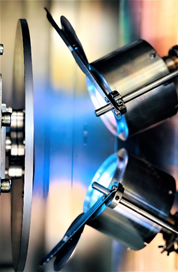The UniSA Testlab comprises of 3D printing, post printing analysis and treatment facilities, and 3D scanning equipment. The materials that can be 3D printed include thermo-plastics, photo-polymers, metals and composite materials such as carbon fibre embedded in nylon-12.
The Testlab features three key capabilities:
Computer-aided design (CAD)
Design is one of the enabling skill sets underpinning manufacturing digitization. The Testlab has experienced CAD designers who have worked in industry and are experts in the translation of designs into the domain of additive manufacturing. This opens entirely new pathways to product innovation and development, with the ability to explore new product opportunities through fully realistic, functional prototypes.
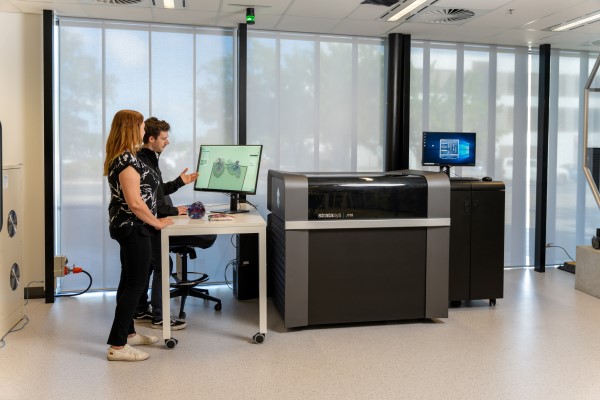
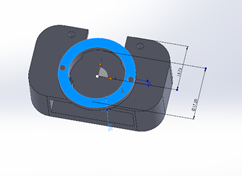
Additive Manufacturing Facilities
The Testlab is equipped with a suite of 3D printing technologies suited to industry. These include:
-
Stratasys J735 Polyjet Printer (Resin printing technology)
The PolyJet process is a 3D resin printing technology that produces smooth, accurate parts, prototypes and tooling. The Stratasys J735 polyjet printer is one of the suite 3D printers in the Testlab. The J735 is a full-colour, Pantone-certified printer that can print hard and soft materials in a single printing run. It has a printing resolution down to 14 microns. For reference, a typical human hair has a diameter of around 100 microns. This enables the creation of vivid and realistic prototypes with the correct tactile sensations that could be taken to market for customer review and comment.
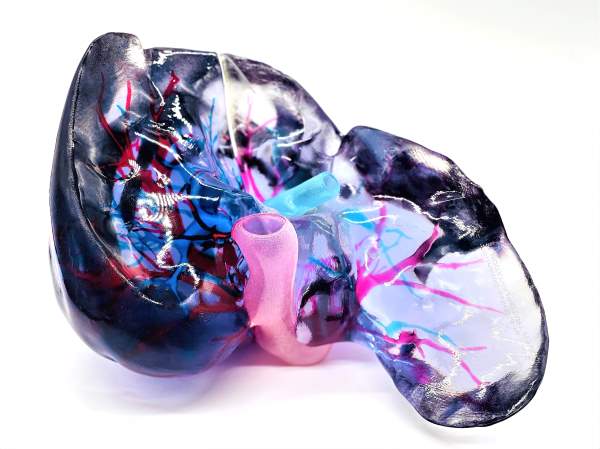
-
Fortus 450mc Printer (Filament printing technology)
Fused deposition modeling (FDM) printing technology uses a thermoplastic polymer in a filament form to create 3D products.
The Fortus 450mc printer can print a range of materials including ABS, ABA, Nylon 12, chopped carbon fibre in Nylon 12, Polycarbonate, ULTEM 1010 and Anterro (PEKK). The PEKK is an aerospace-certified material which can be used to build components for space-based satellites. Other materials such as the ULTEM are ultra-high strength, chemically resistant polymers. The Fortus 450mc printer is suited to a vast range of industrial applications, from manufacturing jigs and fixtures, to the fabrication of spare/replacement parts and even low volume manufacturing. It also has the capability to print injection molding tooling suitable for low-shot testing and product development.
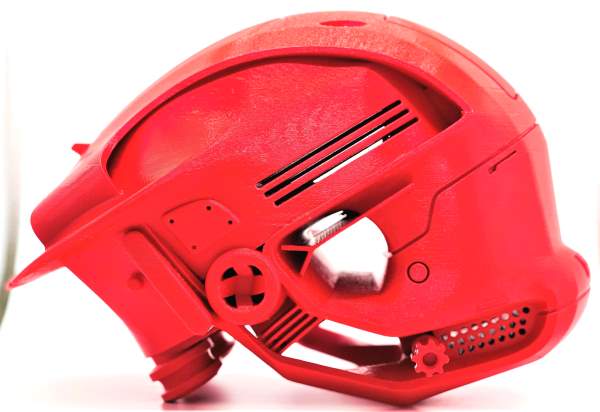
-
Markforged Mark Two Printer (Filament printing technology)
The Mark Two printer is a carbon fibre composite printer that enables the manufacture of rigid, strong, and durable carbon fiber parts. Various types of fibres can be printed including carbon fibre, fiberglass, Kevlar and HSHT fiberglass.
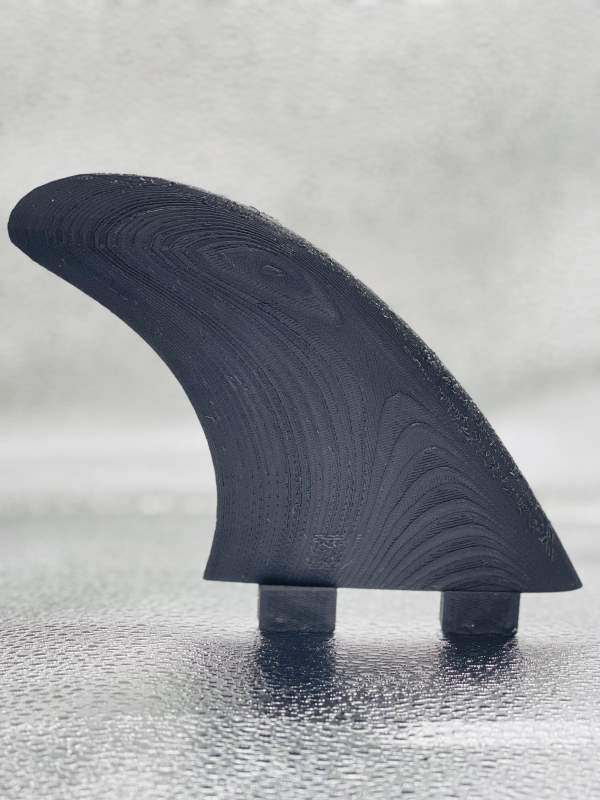
-
Makerbot Method X Printer (Filament printing technology)
The Makerbot Method X printer is a desktop printer engineered to print with a range of FDM materials in a controlled environment to achieve dimensionally accurate production parts at low cost.
-
Lulzbot TAZ 5 Printer (Filament printing technology)
The Lulzbot TAZ 5 is a low-cost 3D FDM printer with a wide range of features that allows printing with a range of FDM materials.
-
DeskTop Metal Studio Printer (Metal printing technology)
Bound metal deposition (BMD) is an extrusion-based printing process where metal components are printed by an extrusion of a metal powder-filled thermoplastic media.
The DeskTop Metal Studio Printer is the world’s first office-friendly metal 3D printer. This technology is a change from previous metal printers and is based on bound metal deposition technology. The printed component is a “green” part, which is then sintered in a furnace to produce the finished solid metal product. The printer can print a range of materials including 17-4 PH steel, 316 stainless steel, copper, H13 tool steel and 4140 chromoly steel.
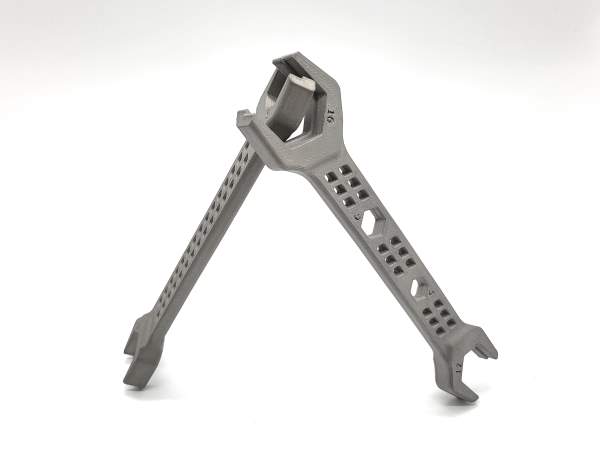
3D Printer Capability Summary
-
Stratasys J735
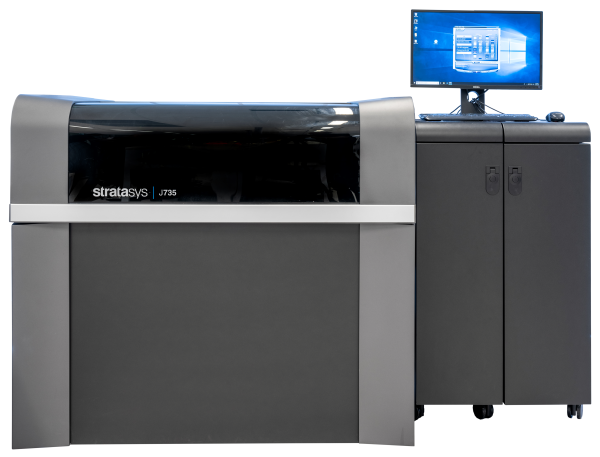
Technology: PolyJet
Material: Resin (Vero, Tango, ABS like)
Build size (mm): 350 X 350 X 200
Layer height (mm): 0.014 – 0.027
Accuracy: High (±0.05 mm)
Material strength: Low (1.5 – 50 MPa)
Features: Pantone certified full colour and texture
-
Fortus 450cm
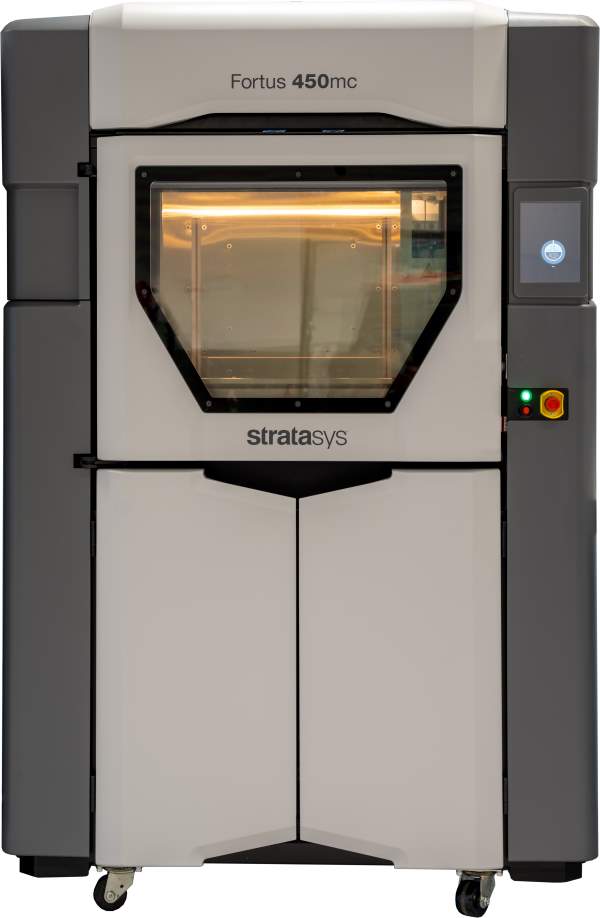
Technology: FDM
Material: Filament (ABS, ASA, Nylon 12, Nylon 12 with CF, PC, ULTEM, Anterro)
Build size (mm): 406 X 355 X 406
Layer height (mm):0.13 – 0.33
Accuracy: High (±0.13 mm)
Material strength: Low (30 – 53 MPa)
Features: Colours; white, red, blue, yellow, natural, black. Heated build chamber
-
Markforged Mark Two
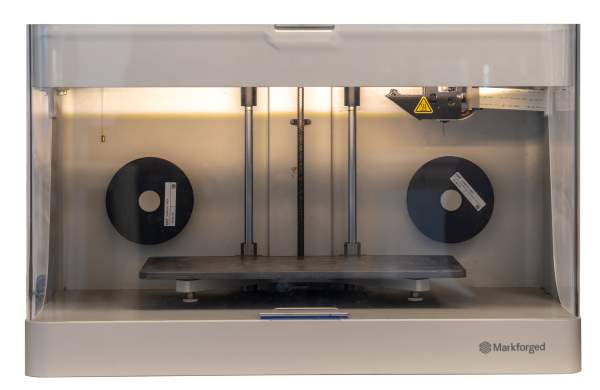 Technology: FDM
Technology: FDMMaterial: Filament (Nylon 12, Onyx, Above with CF, fiberglass, Kevlar, HSHT fiberglass)
Build size (mm): 320 X 132 X 154
Layer height (mm): 0.1 – 0.2
Accuracy: High (±0.2 mm)
Material strength: Very high (800 MPa)
Features: Continuous fiber reinforcement produces strong and rigid parts
-
Makerbot Method X
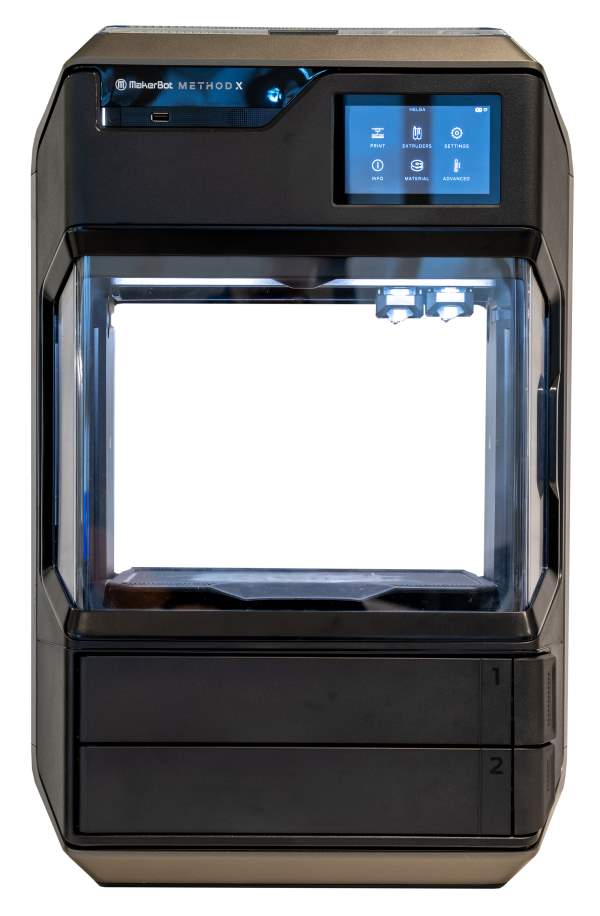 Technology: FDM
Technology: FDMMaterial: Filament (ABS, Nylon)
Build size (mm): 152 X 190 X 196
Layer height (mm): 0.1 – 0.4
Accuracy: Moderate (±0.2 mm)
Material strength: High (42 MPa)
Features: Heated build chamber, cheap print cost
-
Lulzbot TAZ 5
 Technology: FDM
Technology: FDMMaterial: Filament (PLA, TPU)
Build size (mm): 298 X 275 X 250
Layer height (mm): 0.1 – 0.5
Accuracy: Moderate (±0.2 mm)
Material strength: Moderate (110 MPa)
Features: Cheap print cost, Large objects possible
-
DeskTop Metal
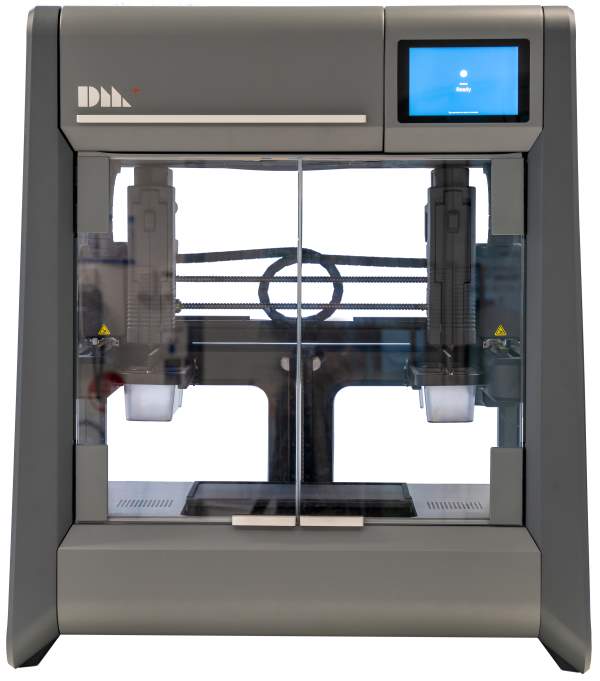 Technology: BMD
Technology: BMDMaterial: Rods (17-4 PH steel, 316 SS, Copper, H13 tool steel, 4140 chromoly steel)
Build size (mm): 240 X 150 X 155
Layer height (mm): 0.15 – 0.3
Accuracy: Moderate (±0.5 mm)
Material strength: Very high (503 - 1042 MPa)
Features: Solid metal parts, Multi-stage printing process
Other Testlab Support
The Testlab is an additive manufacturing hub that offers a product development pipeline for industry. To support the translation of concepts and designs into high value products, the Testlab offers 3D scanning, physical and chemical analysis of printed parts, and treatments to enhance the environmental performance or appearance.
-
3D Scanning
Highly accurate scanning of objects with various textures, sizes, and geometry can be undertaken using the Artec Eva or Artec Space Spider 3D scanners. These are highly accurate, fast, portable scanners that can be used to capture measurements and details of small to medium sized objects. The resolution and accuracy of the scanners are tabled below.
Scanner
Accuracy
Resolution
Artec Space Spider
Up to 0.05 mm
Up to 0.1 mm
Artec Eva
Up to 0.1 mm
Up to 0.2 mm
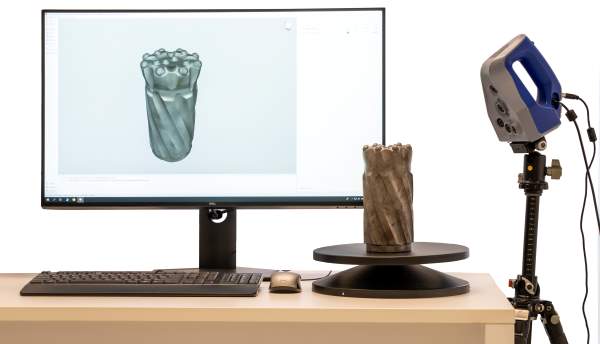
-
Physical Analysis
Product testing is a critical part in assessing whether the printed product is ‘fit-for-purpose’.
The physical analysis process includes testing through impact, compression, thermal shock, abrasion, chemical resistance, and weathering testing.
The MTS Exceed Model E21 provides reliable testing of plastics, nylon, hard rubber, glass fiber reinforced plastics, electrical insulation materials and more. Impact testing is of particular interest to industries developing proprietary material mixes for injection molding and semi-reinforced plastics.
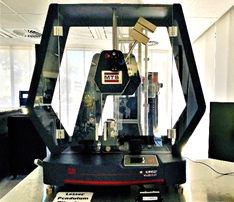
The MTS Exceed Model E22 is specifically designed to test the structural metals used in construction, pipes, pressure vessels, nuclear power containment vessels, and structures for marine, automotive and aerospace vehicles.
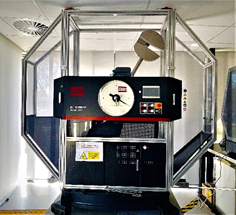
The MTS Exceed Series 44 system features a selection of universal test systems for meeting a wide range of monotonic production testing requirements. This test system employs high-speed, low vibration MTS electromechanical drives and integrated, digital closed-loop controls to test in load and position control at force capacities ranging from 100N to 30kN.
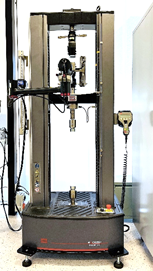
-
Chemical Analysis
The chemical analysis process involves testing for chemical residues or testing the chemical composition of the product. The Testlab has access to a suite of analytical equipment to access the products at the University.
-
Post-Processing Treatments
Post-processing treatments focus on the enhancement of the product’s environmental performance or appearance. This step is often prohibitive for many SME’s due to cost and accessibility; however, it is a vital to ensure the finished product meets necessary compliance guidelines. The Thin Film Coatings facility in the Future Industries Institute (FII) can be utilised to apply thin films to the final product to improve abrasion resistance, water repellency, anti-reflection and corrosion resistance which important to in many industries such as the mining, food and agriculture sectors.
